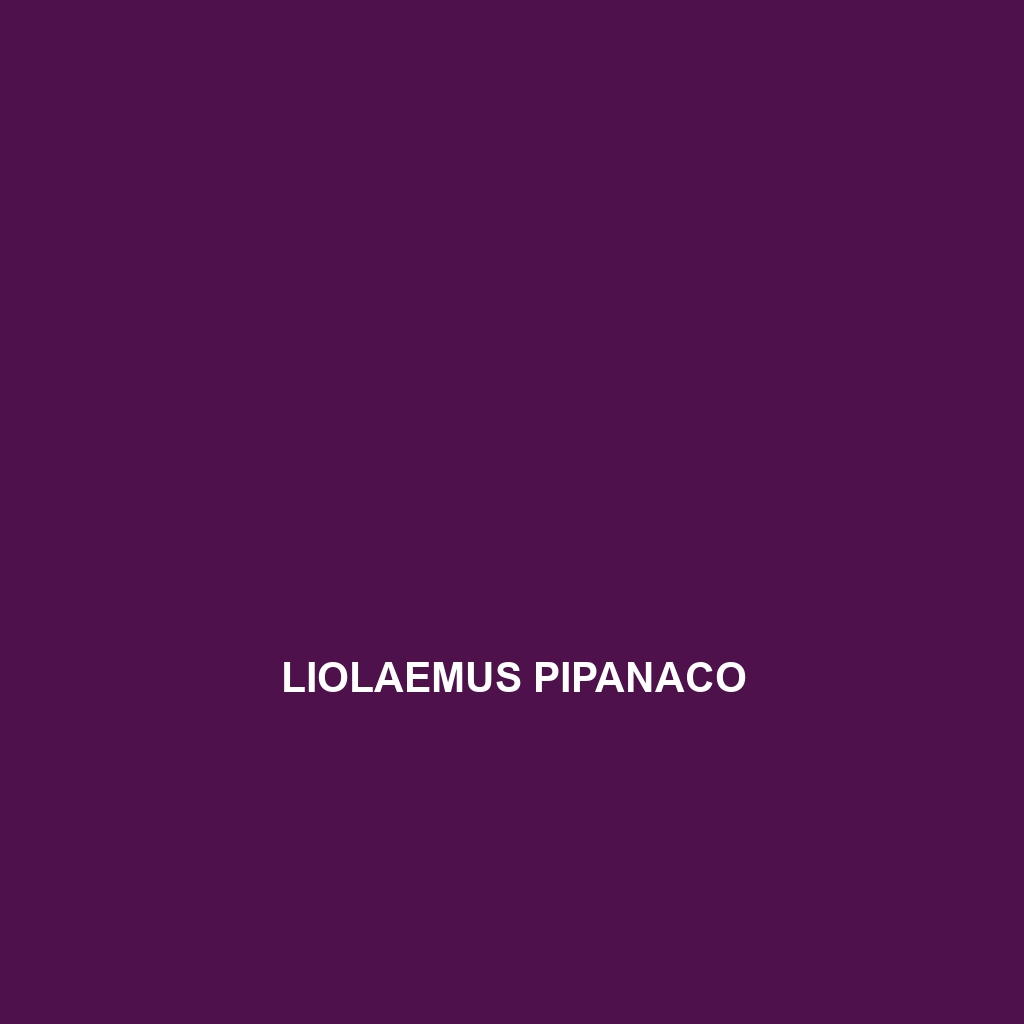<p><b>Liolaemus ramirezae</b> is a medium-sized lizard native to the temperate rainforests of southern Chile and Argentina, known for its vibrant coloration and excellent climbing abilities. This adaptable insectivore plays a crucial role in its ecosystem by controlling insect populations while serving as a food source for larger predators.</p>
Tag: Argentine lizard
Liolaemus pseudoanomalus
<p><b>Liolaemus pseudoanomalus</b> is a moderate-sized lizard found in temperate South American habitats, with a diet primarily consisting of insects and occasional plant matter. Known for its unique coloration and diurnal behavior, this species plays a vital role in controlling insect populations and aiding in seed dispersal within its ecosystem.</p>
Liolaemus porosus
Discover the fascinating Liolaemus porosus, known as the Porous Lizard; this resilient species thrives in diverse South American habitats and showcases unique physical traits, including vibrant coloration and robust bodies, while playing a crucial role in maintaining ecological balance as both predator and prey.
Liolaemus pipanaco
<p><b>Liolaemus pipanaco</b> is a small, resilient lizard found in the arid regions of northern Argentina, displaying distinct sandy brown to greenish coloration with dark patterns for effective camouflage. This diurnal insectivore thrives in rocky environments, exhibiting adaptability through unique climbing abilities and ovoviviparous reproduction, while playing a crucial role in controlling insect populations within its ecosystem.</p>
Liolaemus paulinae
Discover the vibrant Liolaemus paulinae, a striking lizard indigenous to the temperate forests and savannas of the Argentine Andes, known for its olive green and brown patterns, agile climbing abilities, and vital role in controlling insect populations. This adaptable species thrives in diverse environments, primarily feeding on insects while exhibiting intriguing mating displays during the warmer months.
Liolaemus monticola
<b>Liolaemus monticola</b> is a medium-sized lizard native to the mountainous regions of central and southern Chile and Argentina, thriving in temperate forests and high-altitude grasslands. Known for its robust build and distinct dorsal patterns, this insectivorous species displays unique behaviors like diurnal activity, territorial displays, and viviparity, making it an essential part of its ecosystem.
Liolaemus messii
<p><b>Liolaemus messii</b> is a striking lizard found in the temperate forests and savannas of central Chile and Argentina, characterized by its slender body, vibrant green and brown coloration, and diurnal behavior. This insectivorous species adapts well to diverse habitats and plays a crucial role in its ecosystem by controlling insect populations and aiding in seed dispersion.</p>
Liolaemus kriegi
Discover the fascinating Liolaemus kriegi, a resilient lizard native to the rocky terrains of southern Chile and Argentina. With its distinctive earthy coloration and diurnal behavior, this insectivore plays a crucial role in its ecosystem while showcasing unique adaptations for survival in varied habitats.
Liolaemus kolengh
<p><b>Liolaemus kolengh</b>, or the Kolengh lizard, is a distinctive insectivorous lizard found in the temperate forests and savannas of southern Chile and Argentina, featuring a streamlined body that can vary in color from green to grey, and exhibits fascinating social interactions and unique mating displays. Its role in the ecosystem includes controlling insect populations and serving as prey for larger predators, underscoring its importance in maintaining biodiversity.</p>
Liolaemus cuyanus
<p><b>Liolaemus cuyanus</b>, also known as the Cuyana Lizard, is a medium-sized, diurnal lizard native to the temperate forests of the Cuyana Basin in Argentina. With a diet primarily consisting of insects, this species exhibits remarkable adaptability, vibrant coloration, and plays a crucial role in maintaining the ecological balance of its habitat.</p>









